
The metal surfaces of a cooling tower constantly come into contact with water. These surfaces are susceptible to various types of corrosion. Depending on the makeup of water, tower material, chemicals, and other conditions, different types of corrosion can occur.
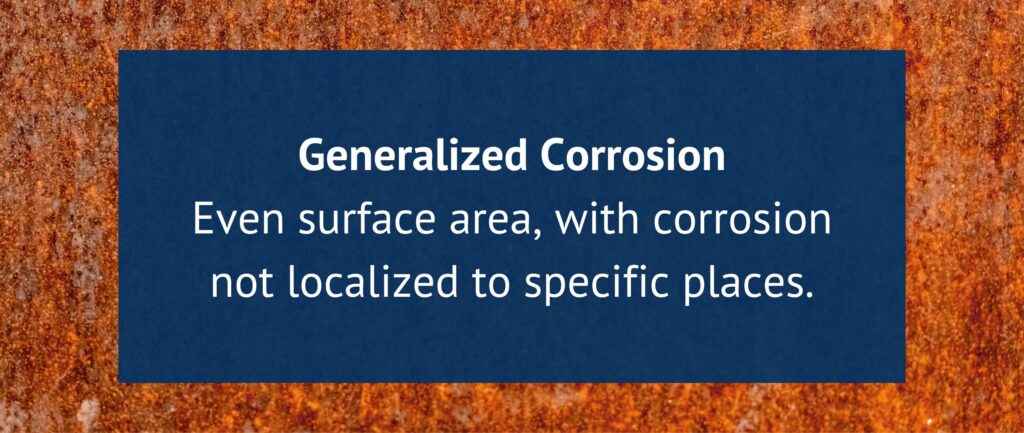
This type of corrosion affects the whole cooling tower surface area equally. This type of corrosion is less harmful than localized corrosion. This is because it is obvious when it first occurs and has not caused damage to the internal structure of the metal yet. The rest of the types of corrosion in this article will be localized corrosion.
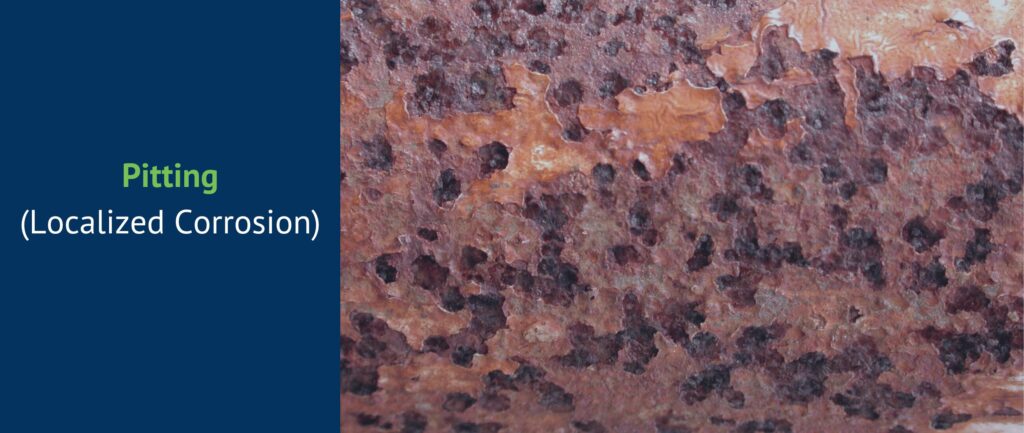
Pitting corrosion occurs in specific areas of the cooling tower (localized corrosion). This is different from generalized corrosion, where the same amount of corrosion is visible. Pitting typically appears smaller on the surface than the damage underneath. These holes or cavities will penetrate faster than surrounding areas. Pitting’s relatively small size makes it more difficult to detect early on.
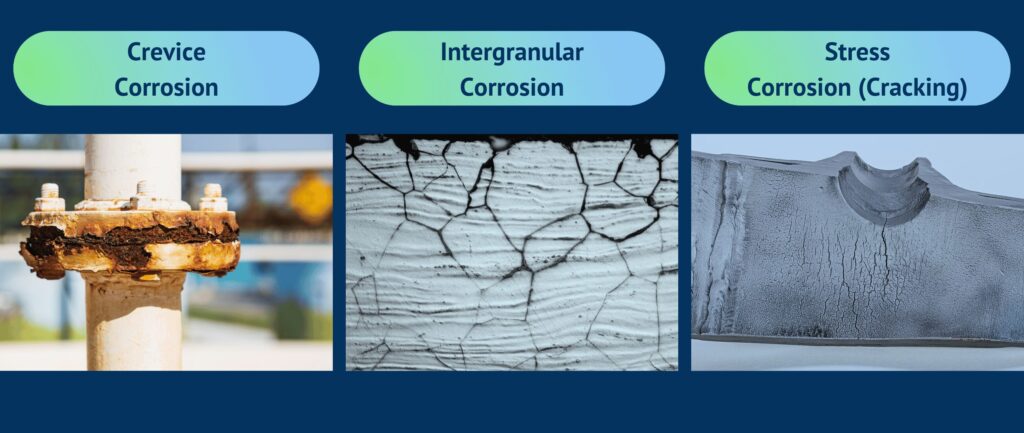
Another type of localized cooling water system corrosion is crevice corrosion. This occurs in stagnant crevices, edges, cracks, etc. Removing the crevice is the best way to prevent this, as it can be difficult to detect once it occurs. Alloys that depend on oxide film protectants are particularly susceptible to crevice corrosion.
This is also a localized type of corrosion. The corrosion occurs along the grain boundaries of the metal surface. This type of corrosion does not typically remove much metal; however, it significantly reduces its strength.
A common type of Intergranular corrosion, stress corrosion is usually caused by faulty welding or high tensile strength during the manufacturing of the cooling tower. Both static and tensile strength in a corrosive environment are present for this type of corrosion to occur.
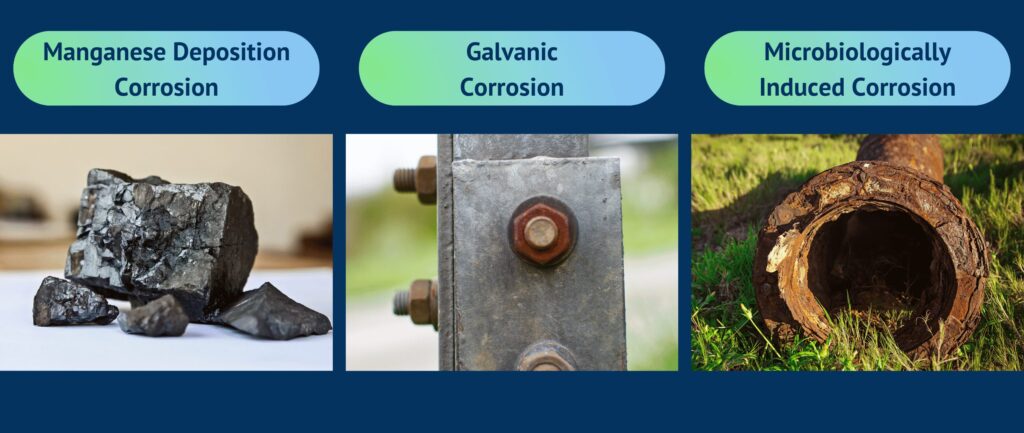
Manganese deposits from the water react with chlorine to form a coating that causes metal to become more cathodic, leading to localized pitting. Oxidizing biocides can be a contributor to this. There are other types of deposit corrosion, this is one of the most common types of it in cooling towers.
In the water/chemical cooling tower solution, this is when two different metals are in contact with each other. The electrical potential for each metal is different. This difference causes the anodic metal to corrode faster than the noble metal.
In cooling water systems, there are microorganisms such as bacteria, algae, fungi, and yeast. These can enter the cooling tower through makeup water or from the air. As a byproduct, they can release corrosive acids that will cause microbiologically induced corrosion, or biocorrosion. The microorganisms may also form a biofilm, which creates a thick, slimy layer in the water that protects and fosters the growth of more microorganisms. Regular cleaning is important to help prevent this. Additionally, MIC is often associated with fouling in a cooling tower.
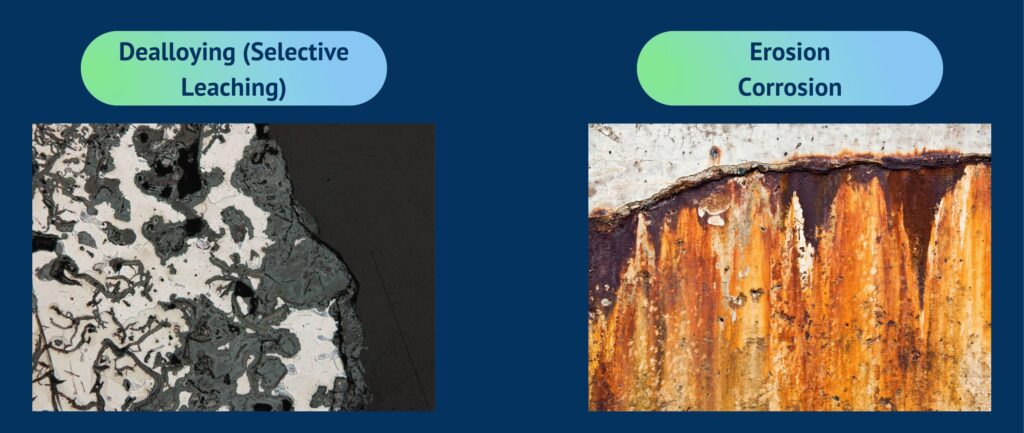
Most common in brass heat exchanger tubes. Selective leaching describes the process where one alloy is dissolved from another. Usually, the conditions of pitting within brass are similar to this. Dezincification removes zinc alloy from the brass tubes. When zinc is removed, the surface becomes much more fragile and porous.
Abrasive water streams wear away the material. The direction in which this erosion is occurring will be evident from the water flow. The protective surface will be eroded, leaving the surface underneath vulnerable to corrosion from the water.
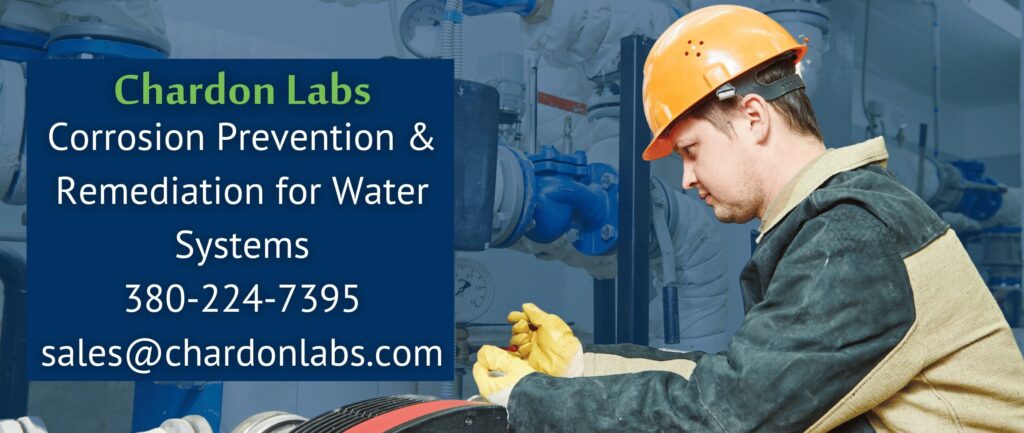
The chemicals used to properly prevent and treat these problems will vary. A cooling tower chemical water treatment specialist such as Chardon Labs will be able to test and treat these issues. We specialize in chemical water treatment services and have seen all types of cooling tower corrosion. We show up regularly and on time. In addition to this, we install remote monitoring and automatic chemical feeders to make sure your cooling tower is always being serviced. Our service technicians report each visit to get ahead of problems and provide the appropriate solution. For a free survey and a chemical water treatment plan for your cooling tower, contact Chardon Labs. Leave a message at (380) 224-7395 or use our online contact form.